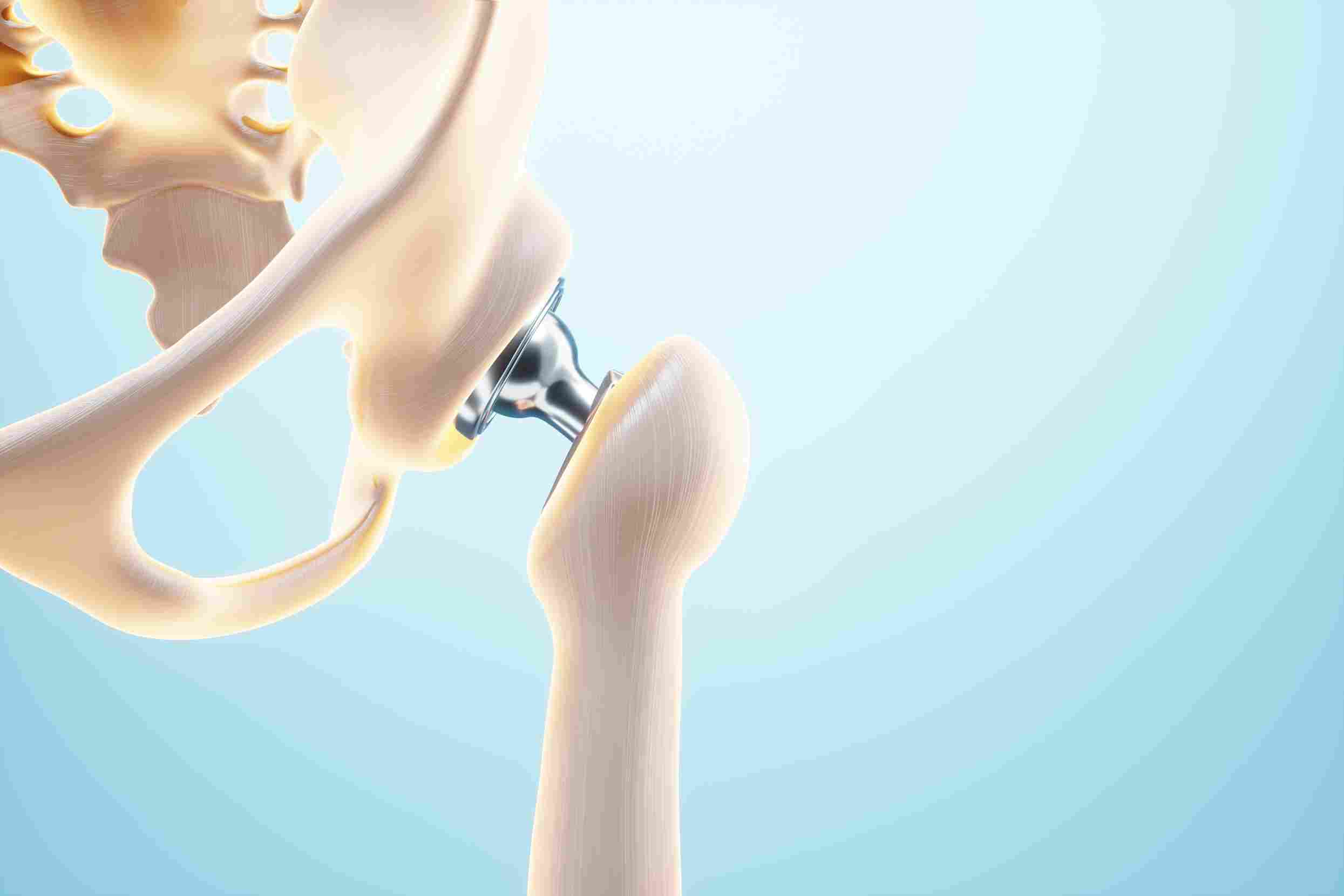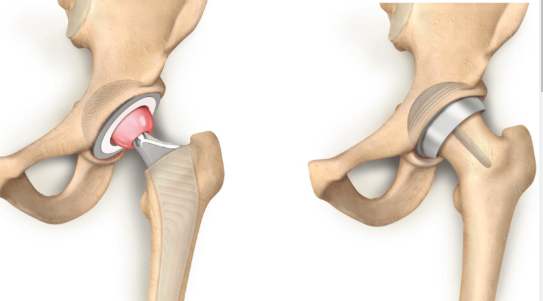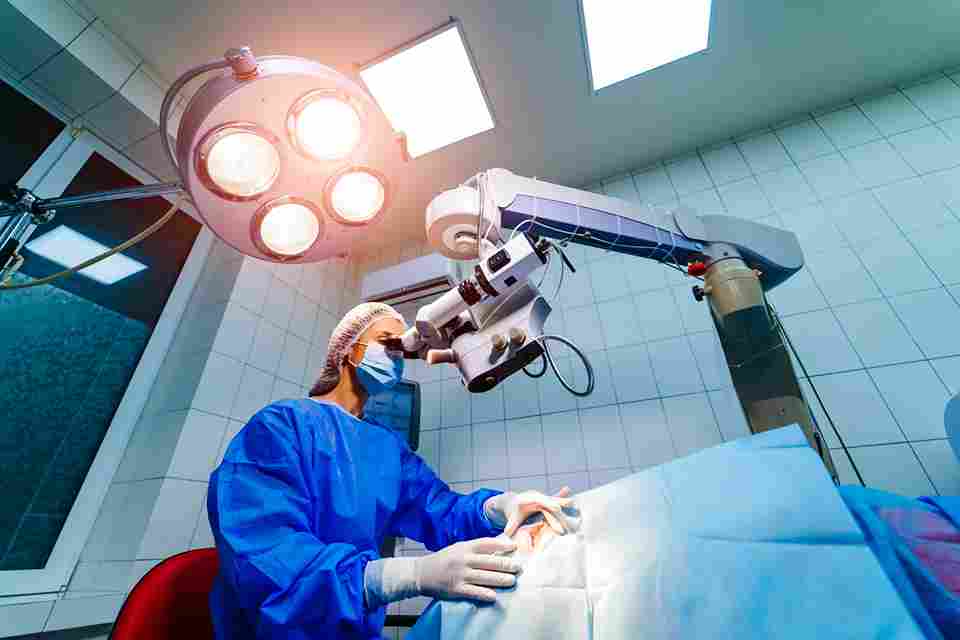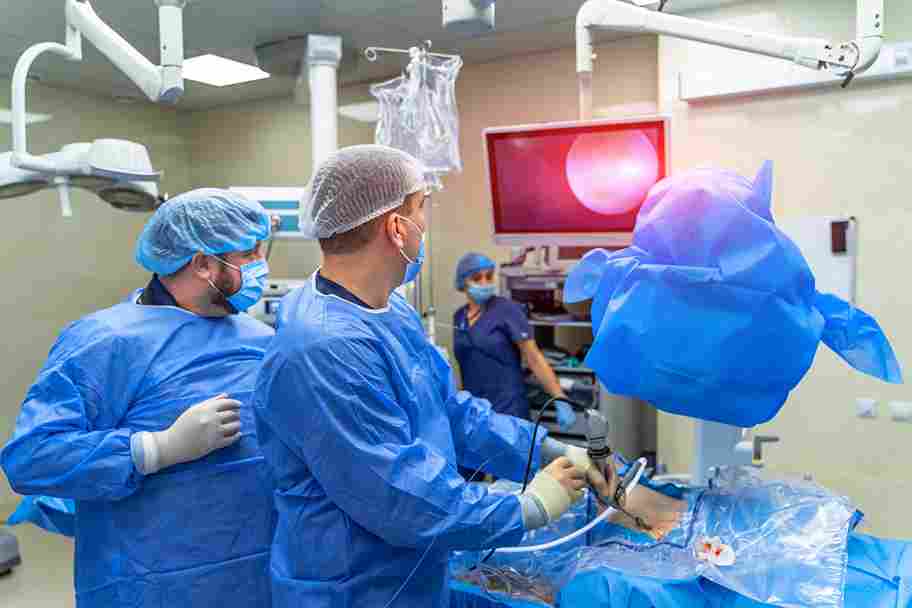

Robotic Hip Replacement Surgery represents a groundbreaking advancement in orthopedics, enhancing the precision and effectiveness of hip joint procedures. Combining cutting-edge robotics and skilled surgeon expertise, this minimally invasive technique offers numerous benefits. With 3D imaging and real-time feedback, the robotic arm ensures precise implant positioning, leading to improved outcomes and reduced complications. Patients experience reduced pain, faster recovery, and increased joint functionality, allowing them to resume their daily activities sooner. The procedure’s tailored approach ensures a perfect fit for each patient, optimizing long-term success. As technology continues to evolve, Robot Assisted Hip Replacement Surgery promises a brighter future for those seeking relief from hip joint ailments.
When the hip joint is severely affected by osteoarthritis, leading to excruciating pain, stiffness, and limitations in daily activities, hip replacement surgery may be the most viable option to alleviate symptoms and improve quality of life.
For individuals with rheumatoid arthritis, a chronic autoimmune disease that can cause inflammation and joint damage, hip replacement surgery becomes necessary when the hip joint is significantly affected, causing persistent pain and impaired mobility.
Certain cases of hip arthritis may result from previous hip injuries or fractures, leading to post-traumatic arthritis. When pain and functional limitations persist despite conservative treatments, hip replacement surgery may be recommended.
This condition occurs when the blood supply to the femoral head is disrupted, causing bone tissue death and potential collapse of the joint. When conservative treatments fail to halt the progression and symptoms worsen, hip replacement surgery is considered.
In complex cases of hip fractures, especially in older individuals with weakened bones, hip replacement may be the best approach to restore stability and function to the hip joint.
Developmental issues with the hip joint, known as hip dysplasia, can lead to premature joint wear and tear. When conservative measures no longer manage the pain and hip function is significantly impaired, hip replacement surgery may be the recommended course of action.
At RKRS Center , we provide cutting-edge Robotic Knee Arthroscopy Surgery. RKRS Center,, our highly qualified orthopedic surgeon, specializes in advanced and minimally invasive solutions for knee issues using cutting-edge robotic technology. We try to provide the best possible outcomes for our patients using our knowledge and the precision of robotic-assisted surgery.
Hip replacement surgery, also known as hip arthroplasty, is a procedure that involves replacing a damaged hip joint with an artificial joint, known as a prosthesis. In India, there are several surgical options available for hip replacement.

Robotic hip replacement is a minimally invasive procedure that utilizes robotic instruments through small incisions, causing less disruption to surrounding tissues and ensuring a faster recovery. The surgical steps are similar to conventional surgery, but the use of robotic technology allows for precise and controlled movements through the small incisions.

The most commonly performed hip replacement surgery in India, the traditional approach involves making an incision either on the side or back of the hip. The surgeon then removes the damaged bone and cartilage, replacing the damaged femur with a metal stem. A metal or ceramic ball is attached to act as the new hip joint, and the damaged socket is replaced with a metal socket lined with plastic or ceramic.

Hip resurfacing is a procedure where the femoral head is capped with a metal head instead of being completely removed. The damaged bone and cartilage in the socket are replaced with a metal cup. This surgery is typically recommended for young and active patients with good bone quality.

This type of surgery is suitable when only the femoral head is fractured, but the socket surrounding it remains healthy. In such cases, the femoral head is replaced with a metal prosthesis, while the socket is left intact.
Prior to Robot Assisted Hip Surgery, the patient’s Pelvis undergoes X-rays and CT scans, which are then segmented and input into the robotic system. This process creates a precise three-dimensional model of the hip joint, encompassing the femur (thigh bone), the socket (acetabulum), and any areas affected by arthritis.
Using this model, the orthopedic robotic surgeon conducts preoperative planning, carefully determining the optimal positioning of the femoral and tibia components. Factors such as patient size, leg angle, articulating surface location, and femur movement in the socket are taken into account, allowing for personalized surgical plans based on the surgeon’s preferences.
With the assistance of the robotic arm, the robotic hip surgery specialist surgeon performs the Hip Replacement Surgery that is anterior robotic hip replacement with unmatched accuracy and precision, which was unattainable with conventional manual instruments.
One of the significant advantages of using the robot is its haptic boundary, which prevents soft-tissue trauma. Numerous peer-reviewed publications have documented the benefits of Robot-Assisted Hip Replacement Surgery, including reduced post-operative pain, enhanced patient satisfaction, increased range of motion, minimized opioid usage, shorter hospital stays, and fewer readmissions due to procedure-related complications.
The custom surgical plan is then uploaded to the robot’s interface in the operating room. During the procedure, the surgeon evaluates the patient’s specific hip motion by bending, flexing, and straightening the hip, all while observing how the robot replicates the movements on its screen.
Adjustments to component positioning can be made, if necessary, based on the tension or laxity of ligaments. The robot’s arm is instrumental in executing the planned cuts during the Robot-Assisted Hip Replacement Surgery, while the surgeon guides its movements.
It’s important to note that the orthopaedic robotic surgeon remains in full control throughout the surgery, with the robot functioning as a precise tool to aid in executing the predetermined plan. The surgeon retains the ability to make real-time adjustments as required.
Robotic hip replacement surgery is a cutting-edge advancement in orthopedic medicine, offering numerous benefits over traditional techniques. From preoperative planning to the post-surgical recovery phase, this minimally invasive procedure has revolutionized hip joint treatment. Let’s delve into the three key phases of robotic hip replacement surgery: before, during, and after.

Before Robotic Hip Replacement Surgery:
The journey towards a successful robotic hip replacement begins with meticulous preoperative preparation. Before the surgery, the patient undergoes a series of medical evaluations, including physical examinations, imaging scans (X-rays, CT scans, or MRIs), and blood tests. These assessments help the surgical team understand the patient’s overall health, the extent of hip joint damage, and any potential underlying conditions that may impact the procedure.
Utilizing advanced robotic planning systems, a patient-specific 3D model of the hip joint is created based on the individual’s unique anatomy. This preoperative planning allows the surgeon to visualize the patient’s hip joint, precisely plan the surgery, and determine the optimal placement of the implant components. The detailed preoperative planning ensures a tailored and accurate approach, enhancing the overall success of the procedure.

The day of the robotic hip replacement surgery marks the culmination of the preparation phase. In the operating room, the patient is placed under anesthesia to ensure a painless and comfortable procedure. Small incisions are made to accommodate the robotic instruments, which enable highly precise movements during the surgery.
The robotic arm, guided by the orthopedic surgeon, assists in the femoral bone cutting, acetabular reaming, and precise placement of the implant components. The surgeon maintains full control throughout the surgery, while the robotic technology enhances accuracy and consistency, minimizing the risk of complications. The safe zone, defined by the preoperative 3D model, ensures that all surgical tools stay within the designated boundaries, precisely aligning and positioning the implants.
The post-surgical phase is crucial for a smooth recovery and optimal outcomes. After the robotic hip replacement, patients are closely monitored in a recovery area before being transferred to a hospital room. Pain management strategies are implemented to ensure comfort, and physical therapy begins as soon as possible to aid in regaining mobility and strength.
Patients are encouraged to participate in rehabilitation exercises under the guidance of physical therapists to support hip joint recovery. The minimally invasive nature of robotic hip replacement contributes to a faster recovery, and patients often experience reduced post-operative pain and a shorter hospital stay compared to traditional methods.
With time and proper care, patients can expect to return to their daily activities with improved mobility, reduced joint pain, and enhanced quality of life after undergoing robotic hip replacement surgery.
Robotic Knee Replacement Surgery in India ,” we are your trusted destination for cutting-edge knee care and advanced robotic surgical solutions. Our dedicated team of experts, located in the vibrant cities of Mumbai and Thane, is committed to providing you with a comprehensive range of services to alleviate knee pain and enhance your quality of life.
Our state-of-the-art offerings include Robot Assisted Knee Replacement Surgery in Thane , Robotic Partial Knee Replacement Surgery, Robotic Hip Replacement Surgery, Robotic Knee Arthroscopy Surgery, and Robotic ACL Reconstruction Surgery. We take pride in our expertise in knee pain management and surgical interventions, ensuring that you receive the highest standard of care.
Our Robotic Knee Replacement surgeon in Mumbai boasts a wealth of experience and unwavering dedication to knee surgeries. With a track record of over 3000 successful procedures, their expertise and commitment ensure you’re in capable hands when you entrust your knee health to us. Your well-being is our priority.
Choose “Robotic Knee Replacement Surgery” for a pain-free, active life, and let us redefine your knee health with precision and innovation.
Please Contact use today if you are looking for Cost of Robotic Knee Replacement surgery in Thane or Mumbai.
The recovery time for a robotic hip replacement varies from patient to patient. Generally, patients can expect to stay in the hospital for a few days after the surgery. However, the full recovery period may range from 4 to 6 weeks before patients can resume normal daily activities. Physical therapy plays a crucial role in the recovery process, helping patients regain strength and mobility in the hip joint.
The duration of robotic hip surgery depends on several factors, including the complexity of the case and the surgeon’s experience. On average, robotic hip surgery takes approximately 1 to 2 hours in the operating room. The advanced robotic technology allows for precise and efficient movements, contributing to shorter surgical times compared to traditional methods.
The cost of robotic hip replacement in India can vary depending on the hospital, surgeon’s fees, location, and the specific implant used. Generally, robotic hip replacement surgery may be slightly more expensive than traditional hip replacement due to the advanced technology involved. However, it’s essential to discuss the cost with the healthcare provider, as some insurance plans may cover a portion of the expenses.
Both traditional and robotic hip replacement surgeries are effective in treating hip joint issues. However, robotic hip replacement offers several advantages, including enhanced precision, reduced complications, and quicker recovery. The choice between the two surgeries depends on the patient’s individual condition and the surgeon’s recommendation
Robotic hip replacement is considered an improvement over traditional hip replacement due to its greater accuracy and control. The robotic arm aids the surgeon in executing the surgery with exceptional precision, resulting in improved implant placement and better outcomes for patients. Additionally, robotic surgery typically leads to a faster recovery and reduced post-operative pain.
Robotic hip replacement surgery has shown promising success rates. While individual results may vary, studies have indicated high rates of satisfaction among patients who have undergone the procedure. The advanced technology of robotic surgery contributes to its success by minimizing complications and improving the overall quality of life for patients.
Yes, robotic surgery often leads to a faster healing process compared to traditional surgery. The minimally invasive nature of robotic hip replacement involves smaller incisions, resulting in reduced tissue trauma and quicker recovery times. Patients typically experience less post-operative pain and can return to their regular activities sooner than with conventional surgery. So robotic hip surgery recovery is very faster then traditional hip surgery.
Robotic hip replacement surgery is designed to be as minimally invasive and pain-free as possible. While some discomfort is expected after any surgical procedure, advancements in pain management techniques and smaller incisions used in robotic surgery contribute to reduced post-operative pain for most patients.
Robotic hip replacement surgery may be slightly more expensive than traditional hip replacement due to the advanced technology involved. However, it’s essential to consider the potential benefits and improved outcomes associated with robotic surgery, which may justify the added cost for some patients.
Most patients can begin walking with the assistance of a walker or crutches shortly after robotic hip replacement surgery. As the recovery progresses and physical therapy is incorporated, patients typically regain the ability to walk independently within a few weeks. The exact timeline may vary based on the individual’s health and response to rehabilitation.
Patient preference for robotic hip replacement surgery is increasing due to its reputation for precision, quicker recovery, and reduced post-operative pain. Many patients appreciate the benefits offered by robotic technology and are willing to choose this advanced approach for their hip replacement surgery. However, individual preferences may vary, and it’s essential to consult with a qualified orthopedic surgeon to determine the most suitable surgical option for each patient’s specific needs.
Arora Clinic, Shop No. 16, Block 2, Emerald Plaza, Hiranandani Meadows, Glady Alvares Road, Behind Standard Chartered Bank, Thane west - 400610
Phone: +91 93260 04795
Copyright © 2023 Arora Clinic. Website is Designed and Handle by Hopeland Healthcare.
WhatsApp us
